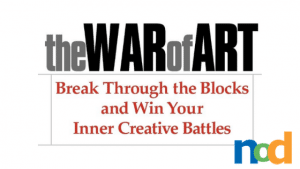When to Reach for Reference
by Taylor Slattery | September 29, 2022

Whether you’re a student, working professional, or a hobbyist, if you have an interest in a creative discipline, chances are you’ve built up a collection of other people’s work that inspires you. This is a common habit amongst creative types and usually develops naturally without our even realizing it’s happening. While reference can play a vital role in our creative processes, it can become a problem over time as we amass large collections and navigating them becomes increasingly difficult—but that’s a topic for another time. The main point I’d like to make is that this impulse is natural, common, and serves a purpose.
The main reason we save images, books, magazines, or any form of reference material, is that it speaks to something within us. What exactly that is, we may not know at the time, but something inside of us is telling us this thing seems useful, so we tuck it away to unearth again at some later date.
Our style is the collective sum of all of the things we gravitate toward. By collecting things to serve as reference, we can organize our thoughts and reflect on the bigger picture to identify patterns and better understand our preferences. Our reference libraries serve as almost a road map of sorts that enable us to navigate our creative language and be more precise and intentional in the application of its various elements.

You could be a photographer with a focus on finding abstract compositions within urban environments or a graphic designer obsessed with crafting eye-catching book covers—no matter your discipline, collecting excellent examples of the type of work you do is an integral part of your studies, both for formalizing these concepts for your own understanding and integrating them into your creative practice.
That being said, it’s easy to lose yourself in reference material. There’s a fine line between influence and imitation and unless we’re intentional in the ways we use reference, this line is easy to cross. Much like the habit of collecting reference, allowing others’ work to bleed into our own and have too strong of an influence on our decision-making also happens unconsciously.
To avoid this, try to make a habit out of identifying the specific qualities of the work that spoke to you in the first place. What was that thing that first caught your eye and made you want to save it? If you can identify that, you can borrow from reference material more intelligently without replicating the whole.
To avoid borrowing too much from the work you admire, it’s best to limit yourself to relying on it at only a couple of points throughout your creative process. The first is during brainstorming. At the start of any creative process, once you’ve properly digested the brief and understand the problem to be solved, it’s helpful to assemble references that present possible directions the project might take. Try to select your references for very specific reasons.

Whether that’s a color palette or layout, try to have a use in mind for each reference you add. Your selections should also be diverse. Avoid selecting too many from any single source, as their specific creative DNA will find its way into your work as well. Instead, pull from a variety of sources. You’ll avoid unintentionally copying your reference material and being forced to connect dots for yourself will likely produce a more interesting result.
The next point at which I think that using reference can be the most useful is when you are struggling to find a solution to a specific problem. Say you’re designing the packaging for a small piece of electronics hardware and you’re struggling to fit all of the necessary copy within its tiny dimensions. You are absolutely not the first designer to find themselves in this position and there’s no point in reinventing the wheel. There’s no harm in looking at the packaging of other small products to see how they’ve solved this problem.

Taylor is the Managing Editor of Notes on Design. Taylor is a graphic designer, illustrator, and Design Lead at Weirdsleep.









